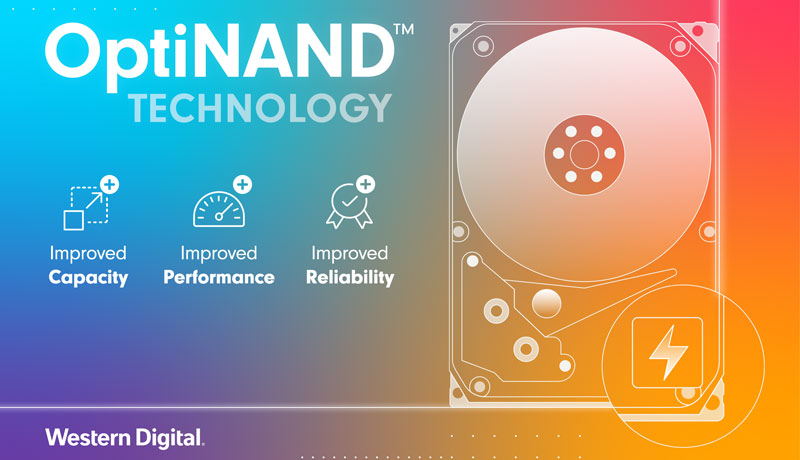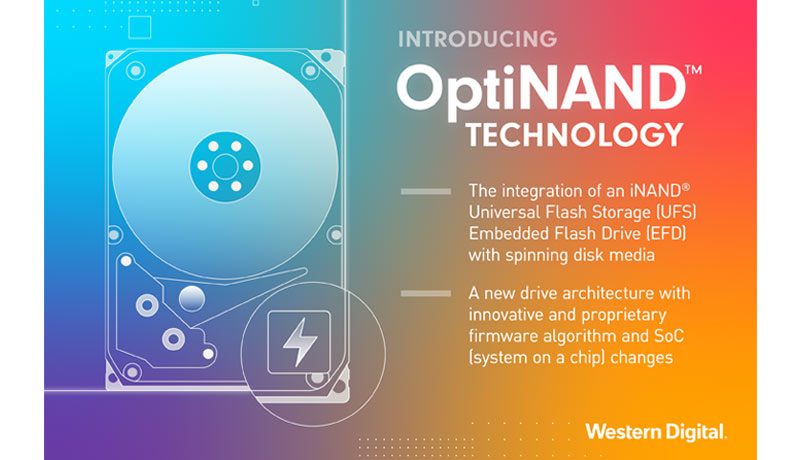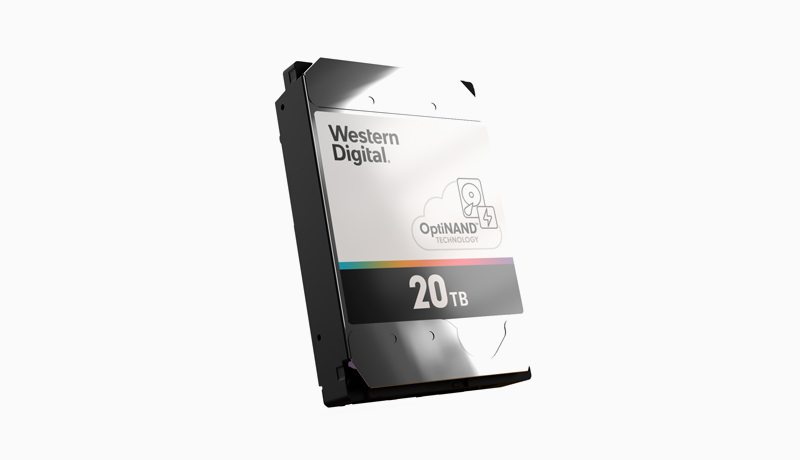
Western Digital Corp. announced a new flash-enhanced drive design that improves digital storage by revamping the hard drive and compensating for the shortcoming of traditional storage barriers. The new storage architecture with OptiNAND technology optimises and integrates HDDs with iNAND® embedded flash drives, building on the company’s unique ability to innovate with HDD and flash. Customers such as hyper-scale cloud, CSPs, enterprises, smart video surveillance partners, NAS suppliers, and others now have a solution to meet the exponential growth in data creation by delivering the capacity, performance, and reliability required to store vast amounts of data today and in the future.

The first devices using the new drive architecture will deliver an unrivaled 2.2TB per platter, extending capacity increases on established ePMR technology, thanks to industry-first technologies including a triple-stage actuator (TSA) and HelioSeal® technology. Western Digital has begun shipping samples of new nine-disk, 20TB ePMR flash-enhanced drives using OptiNAND technology to select customers, marking a new industry milestone.
“Western Digital has a history of hard drive architecture innovations, such as when HGST (now part of Western Digital) first hermetically sealed and shipped helium HDDs in 2013,” said Ed Burns, research director for hard disk drives at IDC.
“Driven by the growth of AI, ML, blockchain, IoT, sensors and more, there’s no doubt that new storage innovations are needed to store and protect today’s data growth, especially at scale. As the only company manufacturing both flash and HDDs, Western Digital can uniquely leverage their in-house capabilities to extend the areal density curve of ePMR drives for generations to come, helping customers meet the growing demands of a digital economy,” added Ed Burns.
“This new architecture is a natural extension of Western Digital’s strengths and capabilities, delivering a new evolution of storage to the market,” said Billy Chen, vice president of New H3C Group, president of Compute and Storage Product Line.
Also commented, “As an early customer, the OptiNAND technology is exciting as it will help us meet our storage needs for years to come.”
Unlike a hybrid drive, which uses flash to store user data, the new design is a storage innovation that operates differently, allowing for advancements in various storage dimensions. Western Digital’s flash-enhanced drives with OptiNAND technology deliver greater capacity, performance, and reliability to assist clients to meet expanding storage demands by integrating vertically integrated iNAND to its world-class HDDs, as well as enhanced firmware algorithm and SoC improvements. Here is a link to a technical brief. Among the highlights are:

“With our IP and world-class development teams in HDD and flash, we are able to continuously push the boundaries of innovation to improve our customers’ storage infrastructure,” said Siva Sivaram, president of Global Technology and Strategy, Western Digital.
And states, “We have had an extraordinary journey of HDD innovation. We changed everything with HelioSeal in 2013; were first to ship energy-assisted HDDs in volume in 2019; and now we’re going to lead again with OptiNAND technology. This architecture will underpin our HDD technology roadmap for multiple generations as we expect that an ePMR HDD with OptiNAND will reach 50TB in the second half of the decade.”
